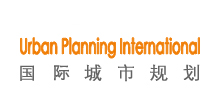|
Abstract: |
While the impact of urban form on transportation energy use has been studied extensively, its impact on residential energy use has not. This article presents a conceptual framework linking urban form to residential energy use via three causal pathways: electric transmission and distribution losses, energy requirements of different housing stocks, and space heating and cooling requirements associated with urban heat island. Two of the three can be analyzed with available national data.
After we control for other influences, residents of sprawling counties are more likely to live in single-family detached houses than otherwise comparable residents of compact counties and also more likely to live in big houses. Both lead to higher residential energy use. Because of the urban heat island effect, residents of sprawling counties across the nation on average pay a small residential energy penalty relative to residents of compact counties. Implications for urban planning are explored. |

